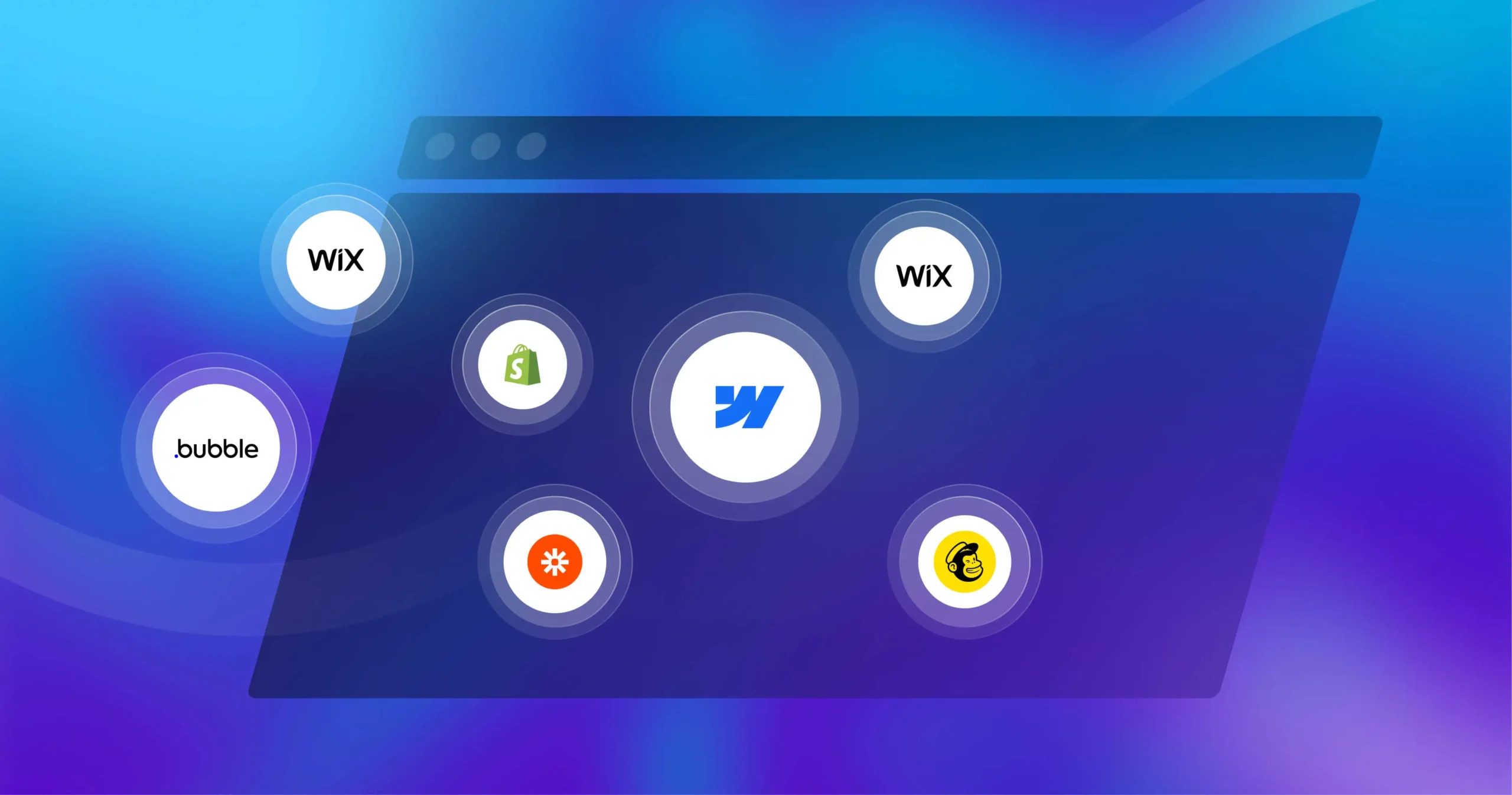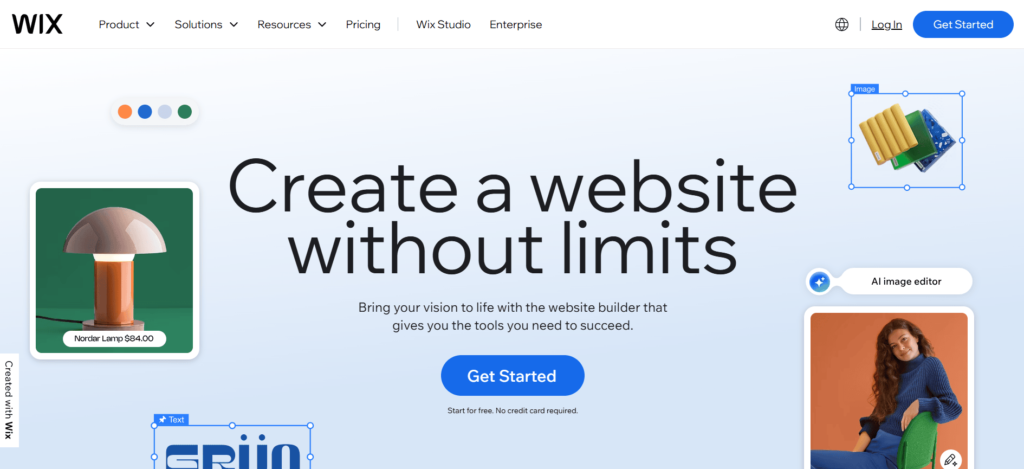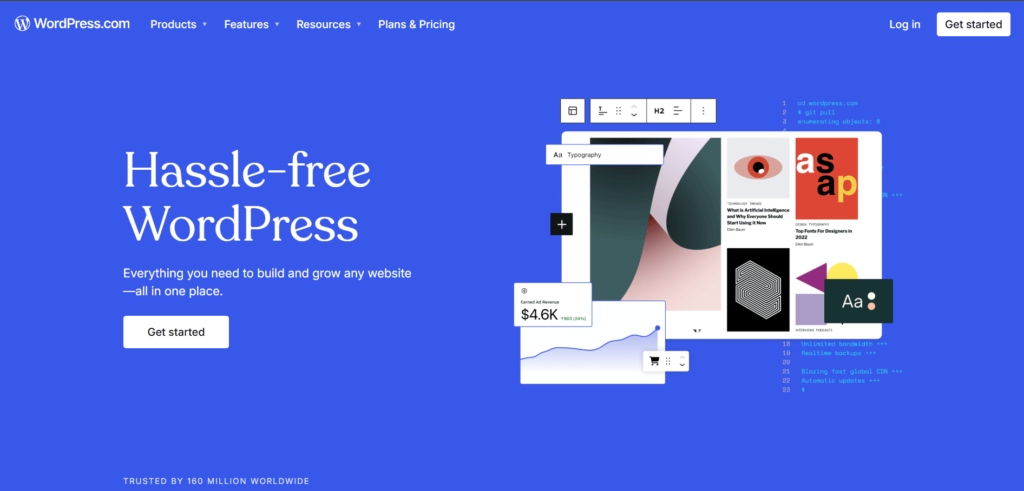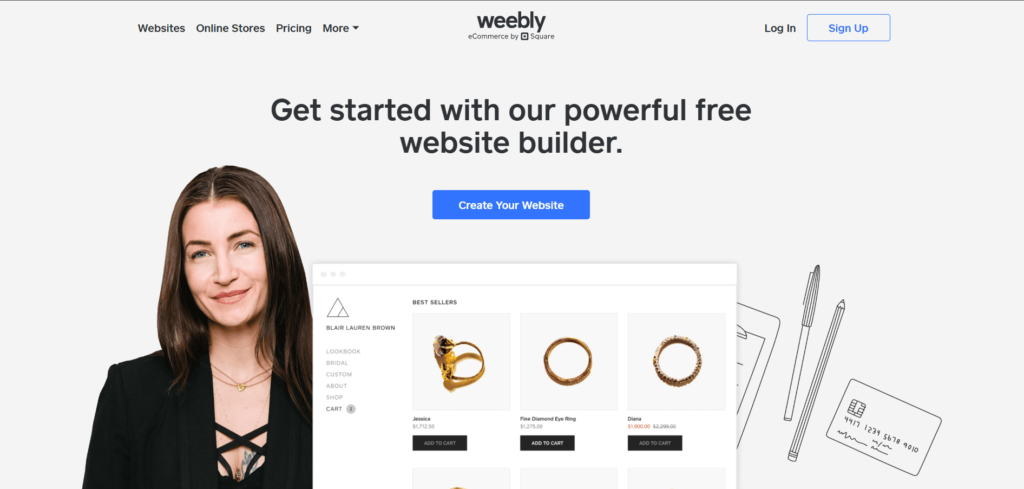
Creating a website without coding is now very simple. Many tools and platforms help people build websites without any technical skills. Whether you need a blog, business site, or personal page, you can do it easily without writing a single line of code. Website builders like Wix, WordPress, and Squarespace offer drag-and-drop features, allowing you to design your site just by selecting templates and adding content.
Web development no longer requires coding knowledge, making it accessible to everyone. You can choose a domain name, select a hosting plan, and customize your website with text, images, and videos. These platforms also provide SEO tools, security features, and mobile-friendly designs to make your site look professional. Whether for personal or business use, web development has become easy, fast, and cost-effective for anyone who wants to create an online presence without learning complex programming.
Why Make a Website Without Coding?
There are many reasons why people prefer to create a website without coding. In today’s digital world, having a website is essential for businesses, professionals, and even individuals. However, not everyone has the technical knowledge to build a website from scratch. This is where website builders come in handy. They allow you to create a professional website without any coding skills. Let’s explore the benefits of making a website without coding in detail.
1. No Technical Skills Required
One of the biggest advantages of using a website builder is that you don’t need any knowledge of web development and you easily create a website without coding. Traditional web development requires learning complex programming languages such as HTML, CSS, JavaScript and React.js. This can take months or even years to master.
2. Saves Time
Learning web development from scratch takes a lot of time. If you decide to hire a professional developer, it can also take weeks or months to get your website ready. On the other hand, website builders allow you to create a website without coding within hours.
3. Affordable and Cost-Effective
Hiring a web development expert or an agency can be expensive. A professionally developed website can cost hundreds or even thousands of dollars. Additionally, maintaining and updating the website may require further costs. Website builders offer a cost-effective solution.
4. Easy to Update and Maintain
With traditional web development, making changes to your website requires coding knowledge. If you want to update content, change images, or modify the layout, you might need to hire a developer every time. However, website builders make updating your site easy.
5. Professional and Modern Designs
Website builders offer a wide range of professionally designed templates. These templates are created by experienced designers and are optimized for a great user experience. Instead of spending weeks designing a website from scratch, you can simply choose a template that fits your business or personal needs
Step 1: Choose a Website Builder
A website builder is an online tool that helps you create a website without coding skills. These platforms offer an easy way to design, edit, and launch a professional website without coding . If you are new to web development, website builders are the best option to get started.
There are many website builders available, and each one has its own features. Below are some of the most popular website builders:
1. Wix

Wix is one of the best website builders for beginners. It offers a simple drag-and-drop interface, which means you can create a website without coding by simply selecting and moving elements like text, images, and buttons. Wix also provides many free and premium templates, allowing you to create a beautiful create a website without coding effort. It is ideal for small businesses, blogs, portfolios, and personal websites.
2. WordPress.com

WordPress.com is a well-known platform for creating websites and blogs. It offers a variety of themes and plugins that help customize your website without coding. Unlike WordPress.org, which requires separate hosting, WordPress.com includes hosting, making it easy to use. It is perfect for those who want more control over their website’s design and functionality without learning coding.
3. Squarespace

Squarespace is known for its elegant and modern website designs. It provides stylish and high-quality templates that are perfect for photographers, artists, designers, and businesses that want a professional-looking website. Squarespace also includes built-in SEO and eCommerce features, making it a great choice for online businesses.
4. Weebly

Weebly is another user-friendly website builder with a drag-and-drop feature. It offers many customization options and is a great choice for beginners who want an easy way to create a website without coding. Weebly is also known for its affordable pricing plans and excellent customer support.
5. Shopify

If you want to create an online store, Shopify is the best website builder for eCommerce website without coding. It includes everything you need to sell products online, such as payment processing, inventory management, and marketing tools. Shopify is used by millions of online businesses worldwide.
Each platform offers different features, so choose the one that best suits your needs and experience level. Website builders make web development easy, even for beginners. By selecting the right platform, you can create a professional-looking website without coding knowledge.
Step 2: Choose a Domain Name
A domain name is the unique address of your website on the internet. It is what people will type into their web browsers to visit your site. For example, if you have a business called “My Web Store,” your domain name could be www.mywebstore.com.
Choosing the right domain name is very important because it helps people find your website easily. Here are some tips to help you select the perfect domain name:
1. Keep It Short and Simple
A short and simple domain name is easier for people to remember and type. If your domain name is too long or complicated, visitors may forget it or make mistakes when typing it into their browser.
2. Use a Name Related to Your Website’s Purpose
Your domain name should reflect the main idea or purpose of your website. If you are creating a website for web development services, it is a good idea to include words related to “web development” in your domain name. For example, “BestWebDevelopment.com” or “ProWebDev.com.”
3. Avoid Numbers, Hyphens, or Special Characters
Using numbers, hyphens, or special characters in a domain name can make it confusing. People may not remember where to place the hyphen or whether a number should be written in digits or words.
4. Make It Easy to Spell and Pronounce
Choose a domain name that is easy to spell and pronounce. If people struggle to say your domain name, they may also struggle to type it correctly.
5. Use a Trusted Domain Registrar
To register your domain name, use a trusted domain registrar. Some of the best domain registrars include:
- GoDaddy – One of the most popular and reliable domain registrars.
- Namecheap – Offers affordable domain registration with excellent customer service.
- Google Domains – Provides an easy way to register and manage domains.
Before finalizing your domain name, check if it is available on these platforms. Many registrars allow you to search for available domain names and suggest alternative options if your preferred name is taken.
6. Choose the Right Domain Extension
A domain extension is the last part of your domain name, such as .com, .net, .org, or .tech. The most common and widely recognized extension is .com, but you can also choose other extensions based on your website’s purpose:
- .com – Best for businesses and general websites.
- .net – Often used for technology-related websites.
- .org – Suitable for non-profit organizations.
- .tech – Great for tech and web development websites.
7. Check for Trademarks and Social Media Availability
Before registering your domain name, make sure it is not already trademarked by another business. Also, check if the same name is available on social media platforms like Facebook, Twitter, and Instagram. Having a matching domain and social media handle makes branding easier.
8. Think About the Future
Choose a domain name that will stay relevant as your website grows. Avoid using trendy words or phrases that might become outdated. Pick a name that will still make sense in 5 or 10 years.
By following these tips, you can find the perfect domain name for your web development website. Your domain name is the first impression visitors will have of your site, so choose wisely!
Step 3: Select a Hosting Plan
A hosting plan is an essential part of web development. It provides the space where all your website files are stored so that people can visit your site online. Some website builders include free hosting, but if you choose a platform like WordPress.org, you will need to buy a separate hosting plan.
Here are some trusted hosting providers:
- Bluehost – A great option for WordPress websites. It is beginner-friendly, offers excellent customer support, and has affordable plans.
- SiteGround – Known for its reliable and secure hosting services. It provides strong security features and fast loading times.
- Hostinger – A budget-friendly hosting provider that offers good performance, making it ideal for small businesses and personal websites.
- A2 Hosting – Provides fast and optimized hosting services. It is a great choice for developers and those who want high performance.
What to Look for in a Hosting Plan
When selecting a hosting plan, consider the following:
- Speed and Performance – A fast website improves user experience and boosts search engine rankings.
- Security – Choose a hosting provider that includes SSL certificates, firewalls, and malware protection.
- Customer Support – Reliable support is crucial if you face issues with your website.
- Scalability – If your website grows, you should be able to upgrade your plan easily.
- Backup Options – Regular backups prevent data loss in case of technical failures.
- Ease of Use – A user-friendly control panel (like cPanel) makes managing your website easier.
Before finalizing a hosting provider, compare their features and pricing to find the best option for your web development needs.
Step 4: Choose a Template
A template is a pre-designed layout that decides how your website looks. Website builders provide a variety of templates that you can use to create a website quickly. When choosing a template for your website, keep the following things in mind:
- Select a Template Based on Your Website’s Purpose: Your website should look and feel appropriate for its purpose. If you are making a business website, choose a template that looks professional. If you are making a blog, pick a clean and simple layout that makes reading easy. If it is a portfolio website, select a visually appealing template that highlights your work.
- Ensure the Template is Mobile-Friendly: A mobile-friendly template ensures that your website looks good on all devices, including smartphones, tablets, and computers. Many people browse websites using their phones, so a template that adjusts to different screen sizes will improve user experience.
- Look for Customization Options: Choose a template that allows you to easily change colors, fonts, and images. Customization helps you add your personal touch and branding to the website. Good templates will allow you to change layouts, add new sections, and include special features like image galleries and contact forms.
- Check for SEO-Friendly Design: Web development is not just about design but also about performance. A well-structured template should help search engines understand your website better. Look for templates that are optimized for search engines (SEO-friendly) to increase your website’s chances of appearing in search results.
- Pick a Template with Fast Loading Speed: A slow website can make visitors leave before they explore your content. Ensure that the template you choose is lightweight and loads quickly to improve user experience.
- Check Compatibility with Website Features: Some websites require special features like online stores, booking forms, or membership options. Make sure the template you choose supports all the features you need.
Taking the time to choose the right template will make the web development process easier and help you build a website that looks great and functions well.
Step 5: Customize Your Website
Customization is one of the most important parts of web development. It helps to make your website look unique and reflect your brand identity. Website builders provide easy-to-use drag-and-drop tools that allow you to modify your site without needing any technical knowledge. Here are the key ways you can customize your website:
1. Change Colors, Fonts, and Backgrounds
Colors, fonts, and backgrounds play a crucial role in web development. They affect how visitors perceive your site and influence their overall experience. Most website builders allow you to:
- Choose from different color schemes that match your brand or business theme.
- Pick fonts that are easy to read and visually appealing.
- Change the background using solid colors, patterns, gradients, or images.
2. Add Images, Videos, and Slideshows
Multimedia elements like images and videos enhance your website’s appearance and make it more engaging. When adding visuals:
- Use high-quality images that relate to your website’s topic.
- Optimize image sizes to ensure fast loading speeds.
- Embed videos from platforms like YouTube or Vimeo to showcase content without slowing down your site.
- Use slideshows to display multiple images dynamically.
3. Create Essential Pages
A well-structured website must have key pages that provide necessary information. The most important pages in web development include:
- Home Page: The first thing visitors see when they land on your site. It should be clean, informative, and visually appealing.
- About Us Page: Introduces your business, mission, and values to visitors.
- Contact Page: Provides ways for visitors to reach out to you, including a contact form, email, and phone number.
- Services Page: Details the products or services you offer.
- Blog Page: If you plan to share articles or updates, a blog section is essential.
4. Use Widgets and Plugins for Extra Features
Widgets and plugins add extra functionality to your site. Depending on your website’s needs, you can include:
- Testimonials Section: Show customer reviews to build trust.
- Customer Reviews Plugin: Allow visitors to leave feedback.
- Booking Forms: Essential for appointment-based businesses like salons, doctors, and consultants.
- Social Media Widgets: Display your social media feeds and encourage visitors to follow you.
Step 6: Add Content
Content is the heart of your website. Good content makes your website informative, engaging, and valuable for visitors. The quality of your content plays a crucial role in attracting and retaining users. Here are some detailed guidelines to ensure your website has high-quality content:
1. Write Clear, Simple, and Relevant Text
- Use easy-to-understand language so that visitors from all backgrounds can understand the message.
- Keep sentences short and direct to the point.
- Avoid using complicated words or jargon that might confuse readers.
- Ensure all information is relevant to your audience.
2. Use Headings and Bullet Points for Readability
- Headings help organize your content so visitors can find information quickly.
- Bullet points break down complex information into simple, readable sections.
- Well-structured content keeps visitors engaged and improves readability.
3. Include High-Quality Images and Videos
- Use images to visually represent your content.
- High-quality visuals make your website more attractive and engaging.
- Videos can help explain topics in an interactive way.
- Ensure all media is optimized for fast loading speeds.
4. Keep Your Content SEO-Friendly
- Use relevant keywords like web development in your headings and text naturally.
- Avoid overloading text with too many keywords (keyword stuffing).
- Write unique and valuable content that answers visitors’ questions.
- Use internal and external links to provide more useful resources.
5. Create an About Us Page
- An About Us page helps visitors understand who you are and what your website offers.
- Share your mission, values, and history.
- Include a professional photo or team introduction to create a personal connection.
6. Add a Blog Section
- A blog allows you to share valuable information related to web development or your niche.
- Writing informative articles improves SEO and brings more traffic to your site.
- Update your blog regularly with fresh, relevant content.
Step 7: Add Essential Features
To make your website more functional and user-friendly, you should add some important features. These features help improve the user experience, boost security, and enhance your website’s overall performance in web development.
Contact Forms
A contact form is an easy way for visitors to get in touch with you. Instead of showing your email address, a contact form allows users to fill in their details and send a message directly from your website. This improves communication and makes your website look more professional.
Social Media Links
Connecting your website to social media platforms like Facebook, Instagram, Twitter, and LinkedIn is important for increasing engagement. When visitors find your content useful, they can easily share it with others. It also helps drive traffic from social media to your website.
SEO Tools
Search Engine Optimization (SEO) helps your website rank higher on Google and other search engines. Website builders often provide built-in SEO tools or allow you to install plugins like Yoast SEO or RankMath. These tools help with:
- Writing SEO-friendly content
- Adding meta descriptions and keywords
- Improving website speed
- Optimizing images for better loading times
Google Analytics
Tracking your website’s performance is important in web development. Google Analytics helps you monitor:
- The number of visitors to your site
- Where visitors are coming from
- Which pages are the most popular
- How long visitors stay on your site
By analyzing this data, you can improve your website and attract more visitors.
Security Features
Security is a big concern in web development. To keep your website safe from hackers and malware, you should:
- Enable SSL certificates (HTTPS) to encrypt data and protect user information
- Use security plugins to block unauthorized access
- Regularly update your website builder, plugins, and themes
Live Chat Support
If your website is for a business, adding live chat support can improve customer service. It allows visitors to ask questions and get instant responses. This feature is especially useful for eCommerce websites where customers may need help with products or orders.
Step 8: Preview and Test Your Website
Before publishing your website, it is important to check that everything is working correctly. Here are some important things you should review:
- Check All Links and Buttons: Click on every link and button on your website to make sure they work properly. Broken links can frustrate visitors and harm your website’s credibility.
- Test Forms and Contact Pages: If your website has forms (such as contact forms or signup forms), submit test entries to see if they work correctly. Ensure that you receive the messages or emails properly.
- Check Mobile Responsiveness: Open your website on different devices like smartphones and tablets. Your website should look good and function properly on all screen sizes.
- Fix Design and Content Issues: Look for any errors in your website’s design, such as misaligned images, incorrect colors, or unreadable text. Ensure that content is properly formatted and easy to read.
- Ensure Fast Loading Speed: A slow website can make visitors leave quickly. Test your website’s speed using tools like Google PageSpeed Insights. Optimize images and reduce unnecessary elements to improve speed.
- Check Browser Compatibility: Open your website on different web browsers like Google Chrome, Mozilla Firefox, Safari, and Microsoft Edge. Ensure that your site looks and functions the same on all browsers.
Taking time to test your website before publishing helps you provide a smooth experience for your visitors and improves your web development efforts.
Step 9: Publish Your Website
Once you are satisfied with your website, it is time to publish it. Most website builders have a simple publish button that makes the website live instantly. However, launching your website is just the beginning. Here are some important things you should do after publishing:
1. Share Your Website on Social Media
Social media is a great way to let people know about your new website. Share your website link on platforms like Facebook, Instagram, Twitter, and LinkedIn. Encourage friends and family to visit and share your site.
2. Promote Your Website Through Digital Marketing and SEO
Digital marketing plays a big role in bringing visitors to your website. Use web development techniques such as search engine optimization (SEO) to rank higher on Google. Utilize social media ads, Google Ads, and content marketing strategies.
3. Update Content Regularly
A successful website is one that stays fresh and updated. Keep adding new blog posts, product updates, or news about your business. Updating your website regularly will also help improve its SEO ranking.
4. Submit Your Website to Google Search Console
To make sure Google recognizes your website, submit it to Google Search Console. This will help Google index your site faster, making it easier for people to find your website when they search online.
5. Create an Email Subscription List
Email marketing is an effective way to stay connected with visitors. Encourage users to subscribe to your email list by offering newsletters, exclusive content, or discounts. Sending regular updates will keep your audience engaged and informed.
Step 10: Maintain and Improve Your Website
Web development is not just about creating a website; it is an ongoing process that requires regular maintenance and improvements. A well-maintained website helps in providing a better user experience, ranking higher on search engines, and keeping visitors engaged. Here are some important steps to maintain and improve your website effectively:
1. Monitor Traffic Using Google Analytics
One of the best ways to understand how your website is performing is by using Google Analytics. This free tool helps you track visitors, see which pages they visit, and understand how they interact with your content. By analyzing this data, you can make improvements to enhance user experience and increase engagement.
2. Update Content and Images Regularly
Fresh and updated content is essential for any website. Visitors are more likely to return if they find new and useful information. Regularly update your blog, add new images, and ensure that all details on your website are up-to-date. This also improves search engine rankings and keeps your website relevant.
3. Fix Broken Links and Errors
A broken link or an error on your website can create a bad experience for visitors and reduce your credibility. Regularly check for broken links and fix them to ensure smooth navigation. You can use online tools like Google Search Console to find and fix broken links easily.
4. Improve SEO by Optimizing Pages and Adding Blog Content
Search Engine Optimization (SEO) is an important part of web development. To improve your website’s visibility on search engines, you need to optimize pages with the right keywords, add fresh blog content, and follow SEO best practices. Use relevant keywords naturally in your content, create high-quality blog posts, and optimize images for faster loading speed.
5. Ensure Security by Keeping Plugins and Software Up to Date
Security is a major concern in web development. Websites that are not updated regularly are more vulnerable to cyber-attacks. Make sure to update your website’s software, plugins, and themes regularly to protect it from hackers. Also, enable SSL certificates and use strong passwords to enhance security.
6. Engage with Visitors Through Comments, Forums, or Social Media Integration
Interaction with visitors is essential to keep them engaged. Allow users to leave comments on your blog, participate in forums, or connect through social media. Social media integration helps you build a strong online presence and encourages more visitors to interact with your website.
7. Backup Your Website to Prevent Data Loss
Regular backups are essential to prevent data loss in case of technical issues or cyber-attacks. Use automatic backup tools to save a copy of your website’s data. This ensures that you can restore your website quickly if anything goes wrong.
By following these steps, you can maintain and improve your website effectively. Web development is a continuous process, and regular updates help in keeping your website secure, functional, and user-friendly.
Faqs About Web Development Without Coding
1. What is Web Development?
Web development is the process of making websites and web applications. It includes designing, writing content, and programming. There are two main parts: front-end (what users see) and back-end (how the website works). Web development helps businesses, blogs, and online stores reach people worldwide. It requires coding skills or website builders for beginners.
2. Can I Do Web Development Without Coding?
Yes, you can create a website without coding by using website builders like Wix, WordPress, and Shopify. These platforms offer ready-made templates and drag-and-drop tools. They make web development easy for beginners. You can add images, text, and pages without technical knowledge. However, coding helps customize websites for advanced features.
3. What Are the Best Platforms for Web Development?
There are many platforms for web development. Wix and Squarespace are easy for beginners. WordPress is flexible and great for blogs website without coding. Shopify is best for online stores. Weebly is simple and user-friendly. Choose a platform based on your needs. Some platforms are free, while others require a paid plan for more features.
4. How Long Does It Take to Build a Website?
The time to build a website depends on its complexity. A simple website using a builder takes a few hours. A business website with multiple pages may take a few days. A custom-built website with coding takes weeks or months. Web development time depends on design, content, and features needed.
5. What Is the Cost of Web Development?
Web development costs depend on the platform, hosting, and domain. Free website builders are available, but they have limitations. A basic website may cost around $50 to $100 per year. A professional business website with extra features can cost between $200 to $500 annually. Custom-built websites cost more.
6. Is Web Development Easy to Learn?
Web development is easy if you use website builders. Drag-and-drop tools make it simple. Learning coding like HTML, CSS, and JavaScript takes time but offers more control. Many online courses help beginners learn web development. With practice, anyone can create and manage a website without deep technical knowledge.
7. How Can I Make My Website Mobile-Friendly?
A mobile-friendly website adjusts to different screen sizes. Choose a responsive template from a website builder. Optimize images for fast loading. Avoid too much text or small fonts. Test your website on phones and tablets. Web development platforms like WordPress and Wix automatically make websites mobile-friendly.
8. What Is SEO in Web Development?
SEO (Search Engine Optimization) helps websites rank higher on Google. It involves using the right keywords, writing clear content, and making the website fast. Good SEO brings more visitors to a website. Web development platforms offer SEO tools to improve rankings. A well-optimized website appears in search results more often.
9. Can I Earn Money from Web Development?
Yes, web development can help you make money. You can build and sell websites, create an online store, or offer web development services. Blogging and affiliate marketing also generate income. Businesses need websites, so web developers are in demand. Learning web development skills can lead to freelancing or a full-time job.
10. How Do I Keep My Website Secure?
Website security is important in web development. Use a strong password and enable SSL certificates for encryption. Update website software regularly. Install security plugins to prevent hacking. Avoid using weak passwords and outdated plugins. A secure website protects user data and builds trust with visitors.
Conclusion
Building a website without coding is simple and accessible to everyone. Website builders provide tools that make web development easy. By following these steps, you can create a professional-looking site without learning technical skills. Whether you are starting a blog, business, or portfolio site, website builders allow you to design, customize, and publish with ease. Start today and enjoy the benefits of having your own website!






